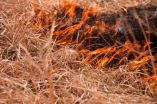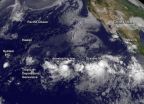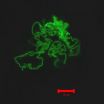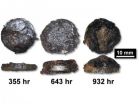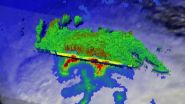(Press-News.org) MANHATTAN — Kansas State University researchers have completed a 20-year study that looks at the consequences of burning Flint Hills prairie at different times of the year. It finds that burning outside of the current late spring time frame has no measurable negative consequences for the prairie and, in fact, may have multiple benefits.
The study was conducted by Gene Towne, research associate and the Konza Prairie Biological Station fire chief, and Joseph Craine, research assistant professor, both in the Division of Biology. They recently published the study, "Ecological consequences of shifting the timing of burning tallgrass prairie," in the peer-reviewed scientific journal PLOS ONE. The study is the most comprehensive on seasonal burning ever conducted.
The Flint Hills are 82,000 square miles of unplowed tallgrass prairie that stretch from eastern Kansas to north-central Oklahoma. The region is an important area for grazing cattle. In a typical year, ranchers annually burn thousands of acres of grassland to reduce the abundance of undesirable trees and shrubs while promoting nutritionally rich grass for that summer's grazing.
Currently, burning of Flint Hills prairie is typically concentrated in late April. The time frame stems from research conducted more than 40 years ago.
"Burning in the Flint Hills has been a scientific and political issue for at least 80 years," Craine said. "Burning the prairie is ecologically important to Kansas grasslands and to ranchers in the region. But when everybody burns at the same time, it becomes a source of contention for cities downwind of the smoke and creates legal issues when clean air standards are exceeded."
The PLOS ONE study uses 20 years' worth of burning data collected at the university's Konza Prairie Biological Station. In 1994 large, replicated watersheds of the native prairie were set aside. Over a 20-year period, each section was burned annually either in the fall, winter or spring. This enabled researchers to look at what effect burning during a particular season had on the vegetation long-term.
They found that when the prairie is burned in fall or winter, grass composition and production was not negatively affected compared to burning in the spring.
"This research indicates that ranchers do not have to restrict their pasture burning to only late April," Towne said. "Burning earlier in the season offers increased flexibility in ensuring that the pasture gets burned without reducing grass production."
Several benefits also were found for burning in the fall or winter.
Grasses in areas burned in the winter or fall had more time to respond to precipitation, which reduced their susceptibility to mid-season drought. Burning in the fall and winter also resulted in a more diverse prairie with more cool-season grasses. These grasses are available earlier and are of a higher forage quality for cattle.
By burning when many animals are active, fires in the late spring can devastate wildlife. Snakes, turtles, prairie chickens and other nesting birds are less likely to be destroyed during fall and winter burns, as wildlife is often hibernating underground or have not yet built nests, Craine said.
Additionally, moving to a more flexible burning schedule helps manage the large volume of smoke that carry to Manhattan and Wichita, Kansas; Kansas City, Missouri; Lincoln, Nebraska, and other cities downwind. Burning over a wider time window would reduce the intensity of the smoke that carries to cities downwind and would be produced at times that are less likely to produce ground-level ozone.
"By burning earlier in the spring than what has been traditionally recommended, many of the smoke management issues in downwind cities can be alleviated," Towne said.
Researchers say that while there is always more research that needs to be conducted, there is no evidence that burning grasslands in the Flint Hills during fall and winter would have a negative effect on the prairies compared to late-spring burning.
"It looks like one of those rare situations where everybody wins," Craine said. "Our ranchers win. Our prairies win. And our neighbors downwind of the Flint Hills also win."
INFORMATION:
Study finds benefits to burning Flint Hills prairie in fall and winter
2014-07-31
ELSE PRESS RELEASES FROM THIS DATE:
Fermi satellite detects gamma-rays from exploding novae
2014-07-31
TEMPE, Ariz. - The Universe is home to a variety of exotic objects and beautiful phenomena, some of which can generate almost inconceivable amounts of energy. ASU Regents' Professor Sumner Starrfield is part of a team that used the Large Area Telescope (LAT) onboard NASA's Fermi Gamma-ray Space Telescope satellite to discover very high energy gamma rays (the most energetic form of light) being emitted by an exploding star. The surprising discovery dispels the long-held idea that classical nova explosions are not powerful enough to produce such high-energy radiation.
In ...
NASA sees Genevieve squeezed between 3 tropical systems
2014-07-31
The resurrected Tropical Depression Genevieve appears squeezed between three other developing areas of low pressure. Satellite data from NOAA and NASA continue to show a lot of tropical activity in the Eastern and Central Pacific Oceans on July 31.
NASA/NOAA's GOES Project at the NASA Goddard Space Flight Center in Greenbelt, Maryland has been kept busy, providing visible and infrared satellite imagery of the Eastern and Central Pacific Oceans. The project uses data from NOAA's GOES-West and GOES-East satellites to create images and animations. All four systems were captured ...
CU Denver study links self-identified ethnic labels to cultural values
2014-07-31
DENVER (July 31, 2014) – A recently released study by a researcher at the University of Colorado Denver and published in the Journal of Humanistic Counseling explores why people of Latin American descent self-identify using terms like Latina/o, Hispanic, and Chicana/o. Carlos Hipolito-Delgado, an associate professor in the School of Education & Human Development at the University of Colorado Denver, found a difference between preferred ethnic labels and how a person identifies with their cultural heritage and United States values.
An expert in ethnic identity development, ...
Carnegie Mellon chemists create nanofibers using unprecedented new method
2014-07-31
PITTSBURGH—Researchers from Carnegie Mellon University have developed a novel method for creating self-assembled protein/polymer nanostructures that are reminiscent of fibers found in living cells. The work offers a promising new way to fabricate materials for drug delivery and tissue engineering applications. The findings were published in the July 28 issue of Angewandte Chemie International Edition.
"We have demonstrated that, by adding flexible linkers to protein molecules, we can form completely new types of aggregates. These aggregates can act as a structural material ...
Groundbreaking research maps cultural history
2014-07-31
New research from Northeastern University has mapped the intellectual migration network in North America and Europe over a 2,000-year span. The team of network scientists used the birth and death locations of more than 150,000 intellectuals to map their mobility patterns in order to identify the major cultural centers on the two continents over two millennia.
In the new paper, to be published Friday in the journal Science, the researchers found how locations such as Rome, London, and Paris have emerged as cultural hubs as more intellectuals died in these cities than ...
NIST corrosion lab tests suggest need for underground gas tank retrofits
2014-07-31
A hidden hazard lurks beneath many of the roughly 156,000 gas stations across the United States.
The hazard is corrosion in parts of underground gas storage tanks—corrosion that could result in failures, leaks and contamination of groundwater, a source of drinking water. In recent years, field inspectors in nine states have reported many rapidly corroding gas storage tank components such as sump pumps. These incidents are generally associated with use of gasoline-ethanol blends and the presence of bacteria, Acetobacter aceti, which convert ethanol to acetic acid, a component ...
New bipartisan House bill draws on U-M health research
2014-07-31
ANN ARBOR—A new bill introduced in Congress with bipartisan support would allow Medicare to test a concept born from University of Michigan research, which could improve the health of patients with chronic illness while reducing what they spend on the medicines and tests they need most.
The bill, introduced last week by U.S. Reps. Diane Black and Earl Blumenauer, grew out of a decade of work by health policy researchers affiliated with the U-M's Institute for Healthcare Policy and Innovation. It would allow Medicare Advantage plans to use innovative "value-based" insurance ...
Parenting skills improve in ADHD parents with medication
2014-07-31
Parenting skills of adults with ADHD improve when their ADHD is treated with medication, according to Penn State College of Medicine researchers.
At least 25 percent of clinic-referred children with attention deficit/hyperactivity disorder have a parent with ADHD.
"Parents with ADHD are at increased risk to engage in problematic parenting techniques, including inconsistent disciplinary practices, making ineffectual commands and diminished use of praise," said James Waxmonsky, associate professor of psychiatry. "Having a parent with ADHD also decreases the chances that ...
The 'memory' of starvation is in your genes
2014-07-31
During the winter of 1944, the Nazis blocked food supplies to the western Netherlands, creating a period of widespread famine and devastation. The impact of starvation on expectant mothers produced one of the first known epigenetic "experiments" — changes resulting from external rather than genetic influences — which suggested that the body's physiological responses to hardship could be inherited. The underlying mechanism, however, remained a mystery.
In a paper published recently in the journal Cell, Dr. Oded Rechavi, Dr. Leah Houri-Ze'ev and Dr. Sarit Anava of Tel ...
NASA sees Tropical Storm Halong move northwest of Guam
2014-07-31
NASA's Tropical Rainfall Measuring Mission or TRMM Satellite passed over Guam as heavy rain fell over the island while Tropical Storm Halong's center passed just to the north of the island.
The TRMM satellite flew above tropical storm Halong on July 31, 2014 at 0904 UTC (August 1, 2014 at 7:04 p.m. local time, Guam).
At NASA's Goddard Space Flight Center in Greenbelt, Maryland TRMM data was used to create a rainfall analysis. The analysis derived TRMM's Microwave Imager (TMI) and Precipitation Radar (PR) data was overlaid on a visible/infrared image from Japan's MTSAT-2 ...
